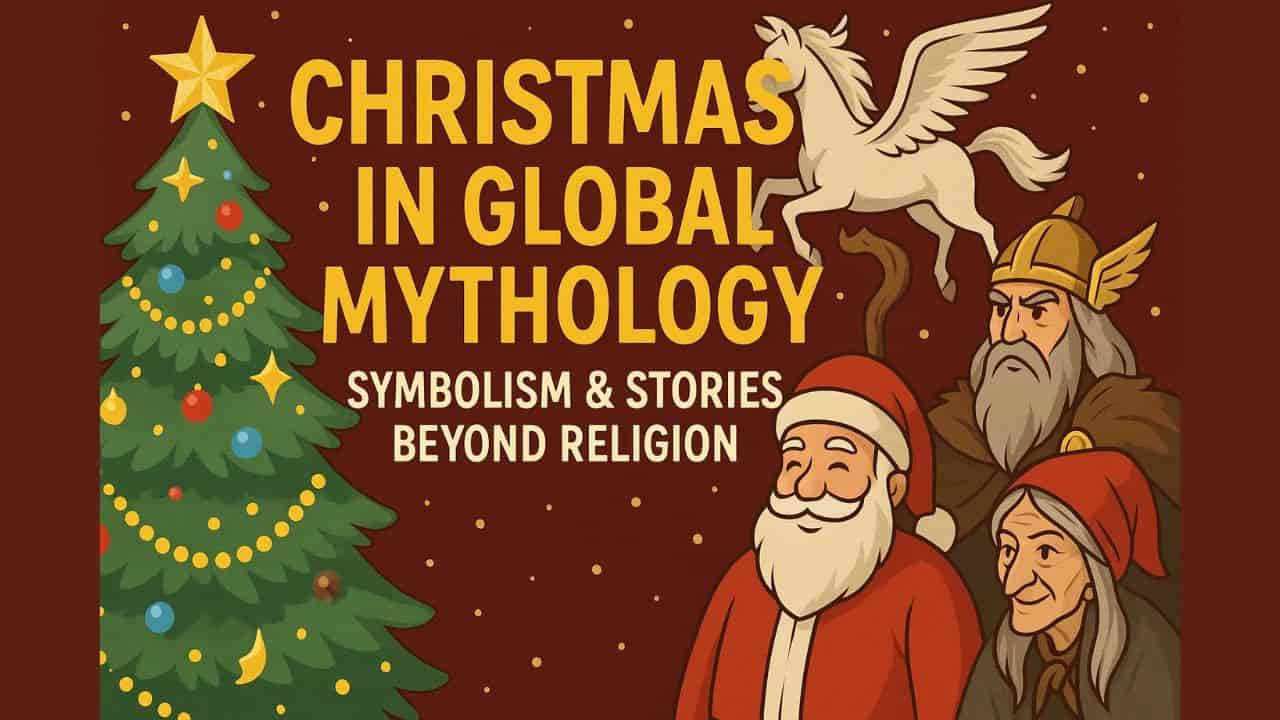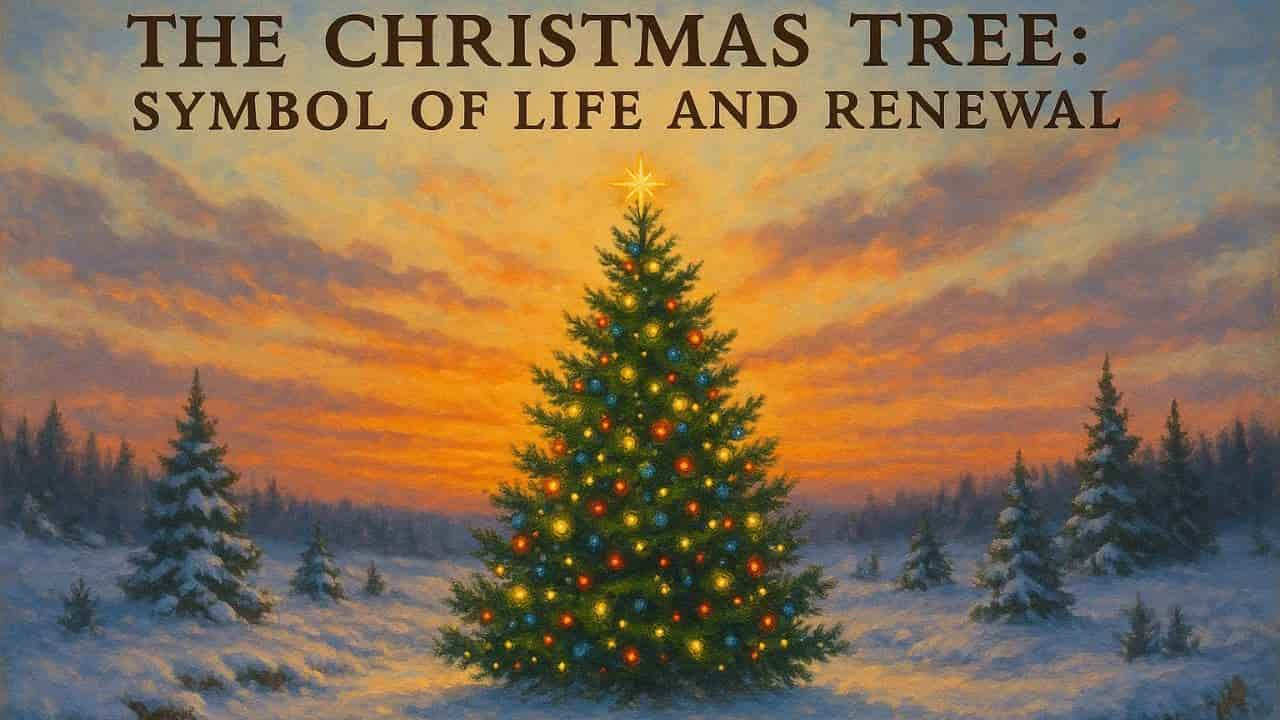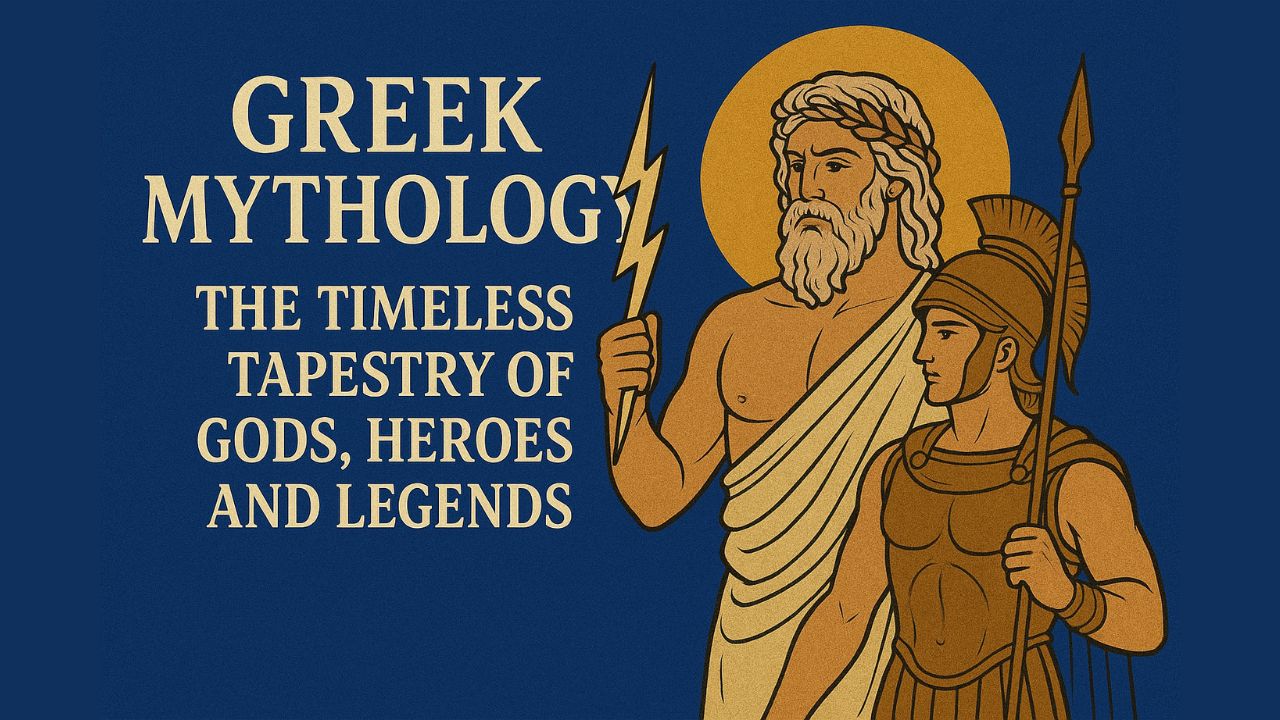
More Than Just a Festival
Christmas is celebrated across the world as the birth of Jesus Christ, yet its roots and traditions go far beyond Christian theology. Over centuries, it has absorbed elements from Pagan rituals, Norse mythology, Roman festivals, and European folklore. The modern celebration of Christmas, with Santa Claus, decorated trees, gift exchanges, and festive feasts, is the result of a cultural blending that makes it a truly global phenomenon. To understand this festival as more than a religious event, we must explore its mythology, symbolism, and stories across different traditions.
Pagan Roots of the Festival
Long before Christianity spread, people celebrated the winter solstice, the longest night and shortest day of the year. For ancient civilizations, this was a time of renewal, when the sun began to return, bringing hope and warmth.
The Roman festival of Saturnalia, held in December, honored Saturn, the god of agriculture. It was a week of feasting, gift-giving, and role reversals where slaves and masters temporarily switched places. Many customs of Saturnalia, such as exchanging gifts and decorating homes, were later absorbed into Christmas traditions.
In Northern Europe, the Yule festival marked the solstice with bonfires, evergreen decorations, and feasts. The Yule log, once burned to symbolize the triumph of light over darkness, survives today as a festive dessert.
Norse Mythology and the Winter Solstice
Norse mythology also influenced the festival we know today. During Yule, people celebrated Odin, the All-Father, who was believed to lead the Wild Hunt across the skies. Odin was often depicted as a bearded man with a cloak, riding a horse through the night, a figure that closely resembles Santa Claus.
Children would place boots filled with straw or carrots by the fireplace to feed Odin’s horse, Sleipnir, and in return, Odin would leave them gifts. This tradition later transformed into the custom of Christmas stockings filled with presents.
The symbolism of evergreens, representing life during winter, also comes from Norse traditions. Decorating trees and hanging wreaths were ways to invite prosperity and ward off evil spirits.
The Story of St. Nicholas and Santa Claus
The figure of Santa Claus blends myth, folklore, and history. St. Nicholas was a fourth-century bishop in Myra (modern-day Turkey) known for his generosity. Legends tell of him secretly leaving coins in people’s shoes or providing dowries for poor girls so they could marry.
When Dutch settlers carried the tradition of “Sinterklaas” to America, it gradually transformed into the jolly figure of Santa Claus. By the 19th century, Santa was widely depicted as a red-suited, cheerful old man delivering gifts to children on Christmas Eve.
Modern depictions of Santa were further popularized by literature, illustrations, and later Coca-Cola advertisements in the 20th century. What began as the tale of a generous saint evolved into a mythic figure embodying kindness, joy, and the spirit of giving.
The Christmas Tree: Symbol of Life and Renewal

The Christmas tree has roots in pre-Christian traditions. Ancient Germans and Celts decorated evergreen trees to honor nature and celebrate the promise of spring. In Christian symbolism, the tree later came to represent eternal life.
By the 16th century, decorated trees were popular in Germany, and the custom spread to England through Queen Victoria and Prince Albert. From candles to glass ornaments, the Christmas tree became central to the holiday. Its universal appeal lies in its message, amid the cold and darkness of winter, life continues to thrive.
Folklore Figures Around the World
Christmas mythology varies across cultures. In Italy, children await La Befana, an old woman who delivers gifts on Epiphany. In Iceland, the Yule Lads, mischievous figures, leave small gifts or tricks in children’s shoes. Germany has Krampus, a terrifying creature who punishes naughty children, balancing Santa’s kindness with discipline.
These characters highlight how different cultures personify morality, blending fear, joy, and wonder into the season’s stories. Christmas thus becomes not just a Christian celebration but a shared global mythology of good versus evil, generosity, and transformation.
Symbolism of Light in Darkness
At the heart of this festival lies the theme of light conquering darkness. The star of Bethlehem guiding the wise men, the candles on the tree, and even modern fairy lights symbolize hope in times of hardship. This universal idea connects this merry festival with other traditions like Diwali in India or Hanukkah in Judaism, where light carries spiritual meaning.
The lighting of Christmas candles or the star atop the tree is not only decorative but also symbolic, a reminder that even in the darkest times, humanity finds ways to celebrate hope and renewal.
Christmas and the Cycle of Renewal
Like many mythological traditions, the festival is tied to the cycle of life and renewal. The birth of Jesus symbolizes a new beginning, but its timing near the winter solstice echoes older myths of rebirth, such as the Egyptian god Horus or the Persian god Mithra, both celebrated around the same time.
This blending of traditions shows how humanity, across cultures, has always sought to celebrate the turning of the seasons as a moment of transformation and fresh starts.
Christmas in Modern Global Culture
Today, this festival is celebrated not only by Christians but also in secular and multicultural ways around the world. In Japan, it is seen as a festival of joy and romance. In India, communities decorate trees and exchange gifts even outside Christian households. In Latin America, celebrations blend Catholic traditions with indigenous rituals.
The commercialization of this day has sometimes overshadowed its spiritual roots, yet the core themes of love, generosity, and family remain intact. From loud festival markets in Europe to street parades in the Philippines, the festival continues to unite people through shared joy.
Beyond Religion: The Mythology of Christmas Spirit
When people talk about the “Christmas spirit,” they mean more than faith, it is a cultural myth in itself. The idea that kindness and generosity peak during this season has become a global story, one that people strive to embody regardless of their beliefs. Literature like Charles Dickens’ “A Christmas Carol” reinforced this, presenting the festival as a time of compassion and renewal.
This mythology of goodwill makes this day universal. Even in non-religious or multi-religious societies, people celebrate it as a time of togetherness and reflection.
A Celebration as a Living Myth
Christmas today is not only a Christian holy day but also a global myth that carries layers of symbolism. From Pagan solstice rituals to Norse legends, from St. Nicholas to Santa Claus, and from ancient trees to twinkling lights, it has become a story that blends faith, folklore, and human imagination.
The festival’s enduring power lies in its ability to unite people across religions, cultures, and continents under common values, hope, generosity, and renewal. This day is not just a date on the calendar but a living myth that continues to evolve with humanity.

